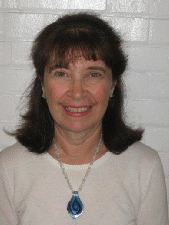非常抱歉,
你要访问的页面不存在,
非常抱歉,
你要访问的页面不存在,
非常抱歉,
你要访问的页面不存在,
验证码:

职称:Professor
所属学校:Catholic University of America
所属院系:Chemistry
所属专业:Chemistry, Other
联系方式: 202-319-5390
Our Chemical Education research at Catholic University deals primarily with the application of cognitive psychology to the learning and teaching of chemistry. Our current research has focused on two main areas, namely: the dual use of technology to both study the effectiveness on student understanding of technological approaches to teaching and the use of technology as a research tool, and explorations of the learning process itself and the factors that affect it. Research on the effectiveness of technological approaches includes studies on student-use patterns of Student Response Systems (clickers) vs. online quizzes on student achievement and their subsequent effect on student achievement. Other studies include an investigation into how long students retain knowledge after testing occasions and the length of time students pay attention in class before their minds wander both duringlecture and other pedagogical approaches. A major emphasis for our new work is the use of eye tracking technology to investigate how students view animations, analyze chemical problems and search for information to solve these probelms.
Our research on the learning process itself has investigated what students do while trying to learn chemistry. An in-depth exploration of the small group interaction within Process Orientated Guided Inquiry (POGIL) classes revealed four levels of student interaction leading to understanding. This study was expanded to investigate the effect of teacher interactions with the groups. The results suggest that different types of teacher interactions are more effective with some subgroups of students than with others. A large national study of the effectiveness of POGIL examines student success for both achievement and process skills questions for POGIL vs. NonPOGIL students at colleges and universities around the country. Other studies have investigated student understanding of what teachers expect when they ask for explanations of chemical phenomena. The results show that many students do not initially grasp what the terms "explain" or "defend" mean in terms of building a logical argument to a chemistry problem. The research showed that purposeful practice can help student understanding on this issue. We have also been involved in the creation of a paired-question General Chemistry Exam for the ACS Exam Instritute. This test serves as a useful instrument in the evaluation of teaching/learning innovations for Chemical Education researchers nationwide. Other work has emphasized the in-service training of chemists in the practices and tools of Chemical Education research through the development of a "textbook" for chemical education research (Nuts and Bolts of Chemical Education Research). Presentation of chemistry to general audiences has included presentations that focus on the chesmitry behind typical occurrences such as Thanksgiving dinner, egg dying, over the counter drugs, nutrition, forensics, cosmetics and environmental issues. The underlying philosophy of this outreach effort is that chemistry is all around us and everyong should be able to understasnd chemistry if they so choose.